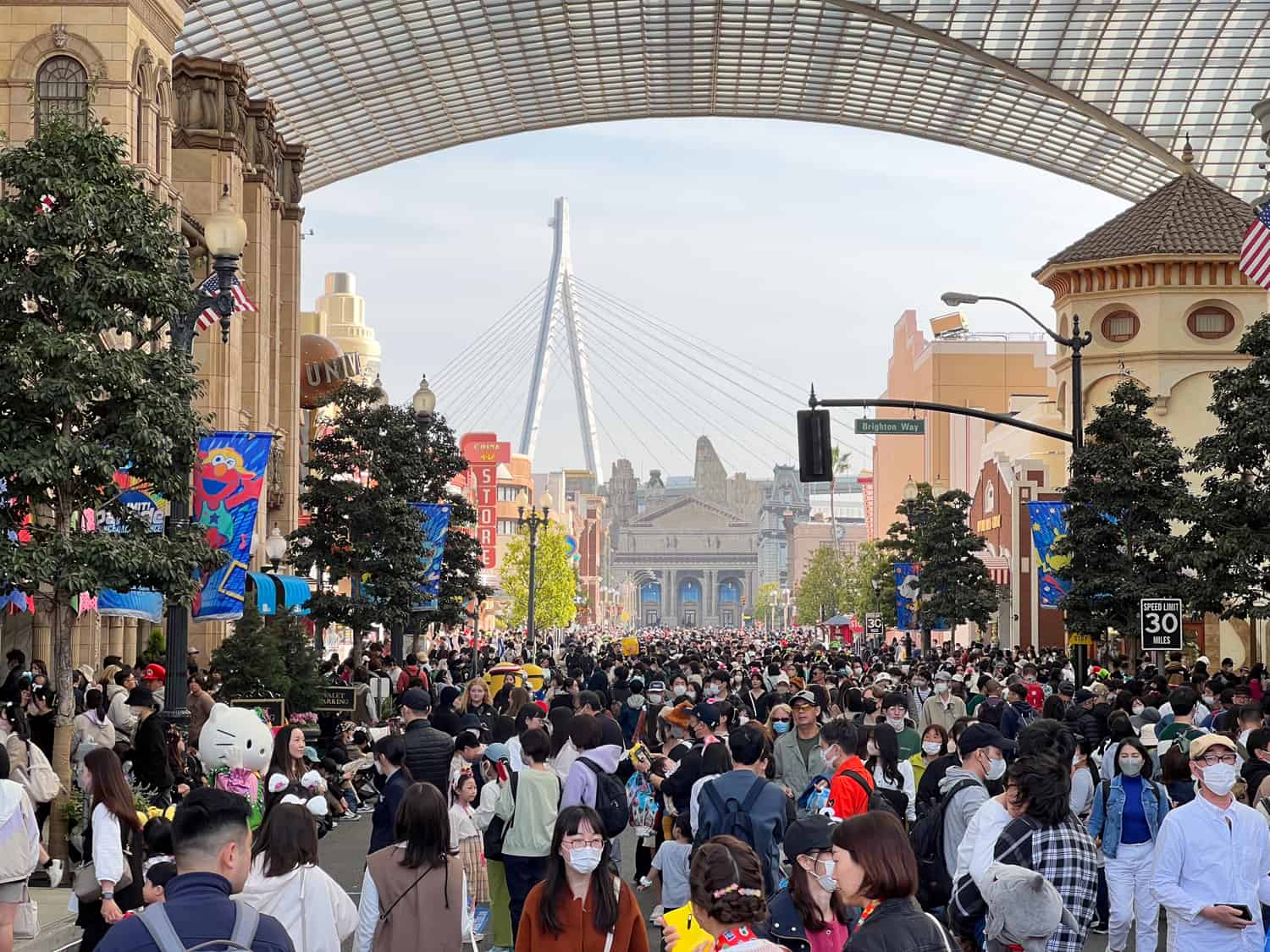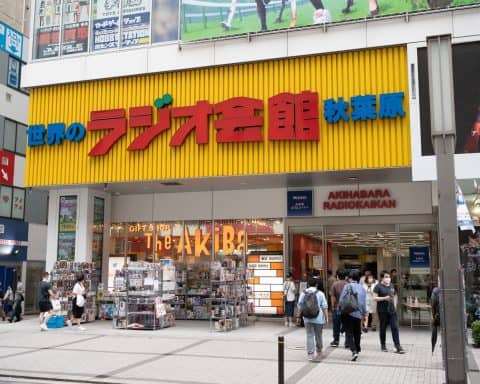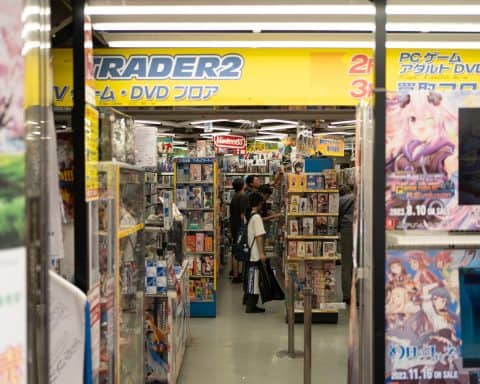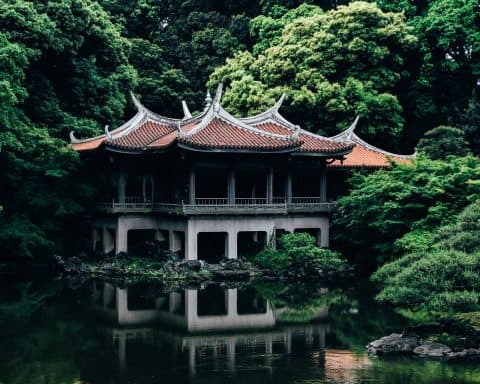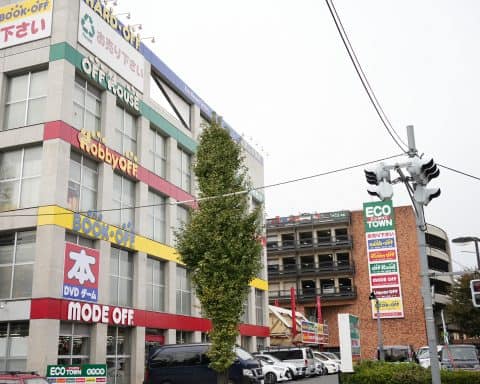Tokyo is the biggest city in the world, and it’s almost perpetually busy. My local commuter train pretty much always has 0 seats available despite the day or time of year, and the same is true for a lot of places up and down the country. So why is Japan so crowded and busy all the time? Or does it perhaps just feel as though it is?
Many tourists who visit Japan likely visit during especially busy times of the year, and want to see all the popular sights. Culture has a big part to play in that too, and what you may think of as busy, might not objectively be the case. As such, it’s rather hard to have a view that isn’t ‘Japan is so crowded’.
Having lived here for a year, I can tell you that Japan isn’t always busy and there are in fact a number of things you can do to make sure you see this country with the least amount of people possible!
Time of year

One of the main reasons Japan is so busy (or at least seems that way) is going to be because of the time of year you travel. Like most places, Japan has certain times of year when it’s busy, and other times when it’s less so.
I know you’ll probably only be able to travel at certain times due to other commitments, but certain times of the year can be way more expensive to fly than others. Make sure you read this article to learn how to get 90% off your flights.
Spring
I’d hazard a guess that most of you reading this article are planning (or already have been) to go to Japan in Spring. From the incredible Sakura to the very pleasant weather, it’s a season I’d recommend to all first-timers with a general itinerary.
Unfortunately for some of the reasons listed above (and some I’ll be talking about in a minute), it also happens to be one of, if not the busiest times of the year to visit Japan. In all honesty, though, I wouldn’t let that put you off. You just HAVE to experience Japan in Spring at least once (preferably several times 😉 ).
Summer
Summer is another popular time of year to visit, and Japan definitely stays fairly crowded. However, I live in the countryside so most people around here are just sleeping to get away from the heat, and I can’t say I blame them!
From a tourism point of view, I would imagine Tokyo and other big cities see a reduction, and hiking trails and outdoor activities see an increase. Trust me when I tell you that being in a city like Tokyo at the height of Summer really isn’t a great experience…
School holidays from July 20 to August 31 also play into the crowded nature of this period. We’ll talk in a bit more detail later about national holidays and how they can make Japan so crowded.
Autumn
Autumn is, in my experience the second most popular season to travel in Japan which makes it the second most crowded. It’s also equally as stunning as spring.
One of the big reasons for this is Koyo/Momiji (changing of the leaves) and to be honest, if you’re in the right place at the right time, it’s absolutely spectacular. When I went to Nikko for the third time, it was this time of year, and driving out of the area was an absolute nightmare.
I’d even expect off-the-beaten-track locations like Oshino Hakkai to be fairly busy in Autumn. Busy, but damn beautiful!
Be prepared if you’re planning to go somewhere popular at this time of year. You’ll have to plan in advance, book your accommodation early, and likely deal with a lot of people if you’re going somewhere famous for koyo.
Winter
This is actually one of the least busy periods in Japan unless you’re headed off to Sapporo or other winter destinations around the country. There are a few things to know before you go skiing in Japan, but it’s a once-in-a-lifetime activity you should definitely have on your bucket list no matter what
While my trip to Niseko did have a few crowds during this time of year, it was nothing compared to the skiing I’ve done in Europe. In terms of other cities around the country, January and February were the least popular or crowded.
Oh, though I did go to Disney Sea World on Christmas day, and that was packed!
Popular Tourist attractions

Sometimes you’ll come to Japan at the least popular and least crowded time, but if you still have a list of popular attractions to visit then there’s a real possibility you’ll be faced with crowds. Here are a couple of examples that I’ve faced this year:
Universal Studios Japan

I really like theme parks, so it was a little disappointing to see this place so busy. Admittedly we traveled during Spring, but I also did prior research into the least busy day to visit and made sure to arrive well before opening time (1+ hours).
How long are the wait times at Universal Studios Japan?
We ended up waiting about 40 minutes to get in. Perhaps because we got there early it wasn’t all that bad, but I can see this being a lot longer if you don’t turn up on time. Still, nothing like Disney Sea.
In terms of how long we waited inside the park, that was anything from 2 hours for the first ride of the day, to 4+ later in the day. As you can imagine, we didn’t ride anything in the afternoon.
Is Universal Japan crowded?
Looking at the photo above that I took on the day, it definitely can be.
The park was absolutely rammed with both Japanese and international tourists. I’d expect this has something to do with it being the first Spring since Japan has opened up, but I’m led to believe it frequently looks like this.
Queues for most of the rides were at least 3 hours long and we had to turn back from the Super Nintendo World because it was so busy, almost scarily so.
What days are the least crowded at Universal Studios Japan?
Queue Times suggests that August is the least busy month, and Tuesday/Thursday is the least busy day. Failing that, just try to avoid weekends!
Arashiyama
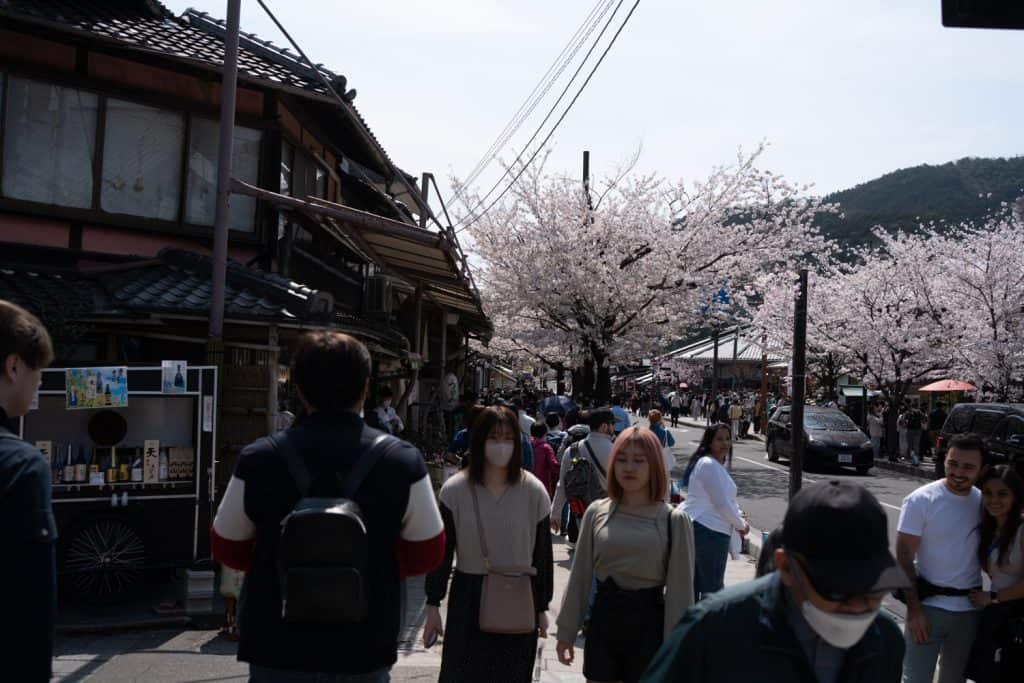
How busy is Arashiyama?
The same as a lot of places, mid-day and weekends are when it’ll be most crowded.
I’ve been to Arashiyama a few times, and it usually ends up like this. That said, as with Nara, I make it my mission to arrive during the early morning and miss most of the crowds, especially if I’m going to the bamboo forest which gets super busy from around 10-2 in the afternoon.
This picture was taken in Spring, but I’ve been here in Autumn and summer as well, and the story is fairly similar. From the bridge, up to the main road and leading into the bamboo forest are going to be quite busy, perhaps any time you visit, to be honest.
The key, as we’ll go into a little later in the article, is to just walk a little further!
Nara

Nara is another popular Japanese destination that’s always busy, at least that’s how it seems. The main walkway going up towards Todaiji Temple is pretty much always packed around mid-day, as is the temple itself.
You’ll also find that when walking from Kintetsu Nara station up to Todaiji Temple, most of the green spaces on either side will look full of people (and deer!). Again the key is pretty much to keep walking, but we’ll get into that a bit later.
Is Nara crowded on the weekend?
Very much so. So make sure you get up as early as possible to go and see those deer!
Festivals and national holidays
Nationwide festivals and holidays are another reason why your time in Japan may seem busy or crowded. Some are pretty self-explanatory, but others are occasions you may accidentally book a holiday at the same time without realizing it.
We’ll talk about that later, but for now, let’s have a look at a few of these time periods and the crowds they come with.
Halloween
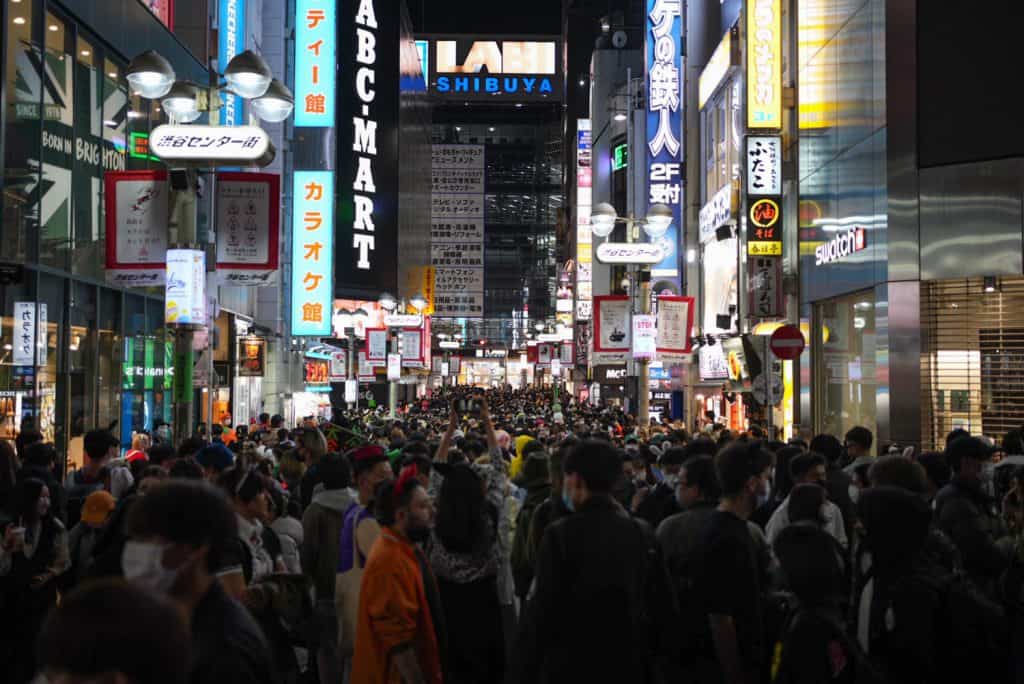
I’d always heard that Halloween in Shibuya was the stuff of legends, but looking back it seems like it was little more than a tourist trap.
Perhaps calling it a tourist trap is a little unwarranted, but in any case, it isn’t going to be that awesome one-of-a-kind experience that you’re after. The streets were far too busy, there was barely any space to move, and it honestly felt a little dangerous.
I feel glad that I’ve experienced it, but I don’t recommend it to anyone. Come to Japan in October by all means (it’s awesome), but maybe go to a planned event instead of the constantly touted Shibuya on the night.
I think Abroad in Japan had a party on the same night and I’m kind of annoyed I missed it, but hey there’s always next year!
Hanami

The whole of spring is pretty busy, and a lot of that has to do with the Sakura. It’s no secret that the fully-bloomed cherry blossom in Japan is photogenic, and that obviously means a lot of people will come out to see it.
This is a photo from a park where we ate a picnic during Hanami season, and you can see from the number of people in the photo that it’s an incredibly popular thing to do in Japan.
Even though having a picnic in a park under a cherry blossom tree in Japan might be a little busy, it was one of the simple pleasures I’ve enjoyed most since my time in the country.
Make sure to take some Sakura snacks, too!
New Year
Do I have any photos of crowds during this time? Nope.
Why?
Because there’s absolutely no way I’m traveling during this period. Oh, that, and I was busy enjoying my own family Shougatsu! (basically, 3-4 days of partying, celebrating, and getting ready for the new year)
If you’ve got to travel by Shinkansen then I recommend booking very far in advance. You’ll be competing for seats against pretty much everyone else in Japan that’s trying to get back home to their family.
Golden Week
As far as I’m concerned, Golden Week is the busiest time of the year to visit Japan.
DO NOT book your holiday on Golden Week if you can help it. The exact dates change every year but they’re normally from the end of April to the end of the first week in May.
If you just type in ‘golden week’ + (the year you want to travel) + ‘Japan’ into Google, you should get the exact dates.
The shopping culture

One thing you’ll notice when you come to Japan is how alive all the cities and towns you visit end up feeling. They stay open later, do their best to make the consumer experience as good as possible, and literally offer anything you could ever want to buy.
I don’t know about you but when I lived in England, where most of the shopping centers and towns are falling down, my first thought would be to buy something online if I’m looking to buy it. That sentiment isn’t the same in Japan.
Websites don’t yet hold the same sway as they do in other countries, and with the shopping experience and culture as it is, I don’t think they need to. I actively want to go into the town even if it’s just for a coffee or something.
If I feel that way, someone who has little disposable income, then people who live in Japan and do have money to spend are going to be buying things from shops a lot more often than online.
While I completely understand why they would do so, and while it often makes the towns a more inviting location, it can definitely make certain areas more busy and crowded in Japan.
Japan’s culture addiction
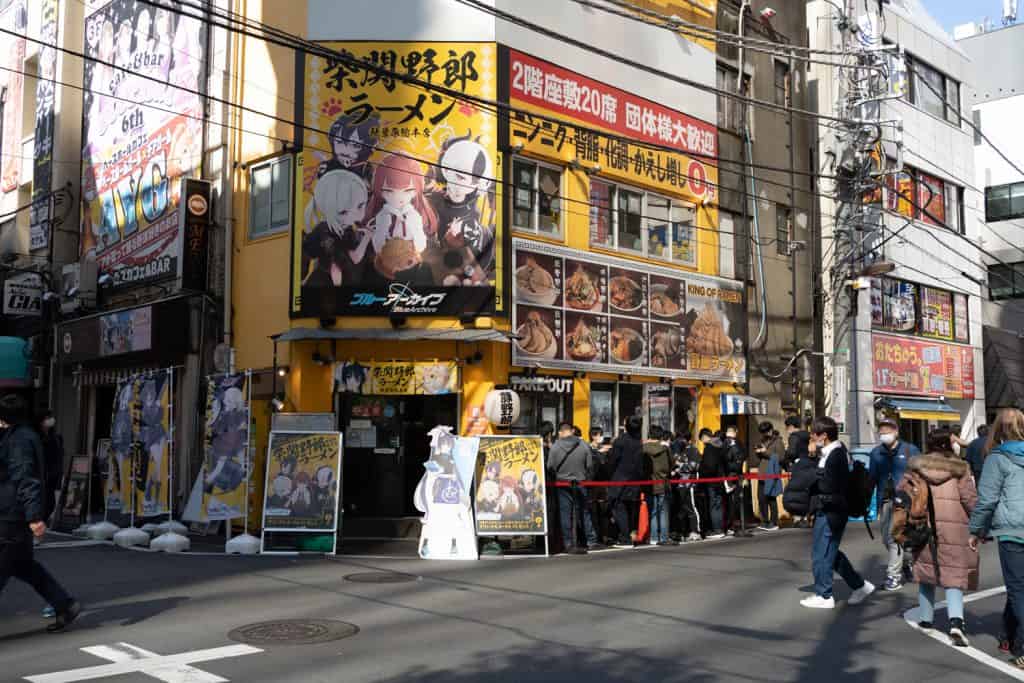
By ‘Japan’s’ culture addiction, I mean the entire world’s addiction to it. The influence of Anime, J-Pop, and practically anything you can (including secondhand Japanese games) has made Japan an incredibly popular destination that often draws huge crowds.
Couple that with the country’s culture that’s often considered to be vastly different from anything in the West, and you start to get a sense of why so many people are intrigued to come here.
For instance, people literally come all the way to Japan to buy Pokemon cards. Not that I blame them, I love those things!
What I mean is that while Japan, like many countries, has the sights and the weather that draw tourists from across the world, it also has this extra layer of popularity that many don’t have. At least, not to the same degree.
Interested in buying a limited edition watch? Japan has some of the biggest and best watch shops in the world. (Watch shopping in Nakano Broadway for instance!)
Want to find a place where you can physically try out practically all photography products currently on sale? Yodobashi’s got your back! (and yes, I mean all the products currently on the market)
In love with trains? Japan has perhaps the best system in the entire world. Reliable, clean, fast, and sometimes with a foot onsen in them (not even joking!)
Those are just a few reasons why people come to Japan, and we haven’t even gotten started on the food, damn the ramen is good!
Reputation as a tourist-friendly destination
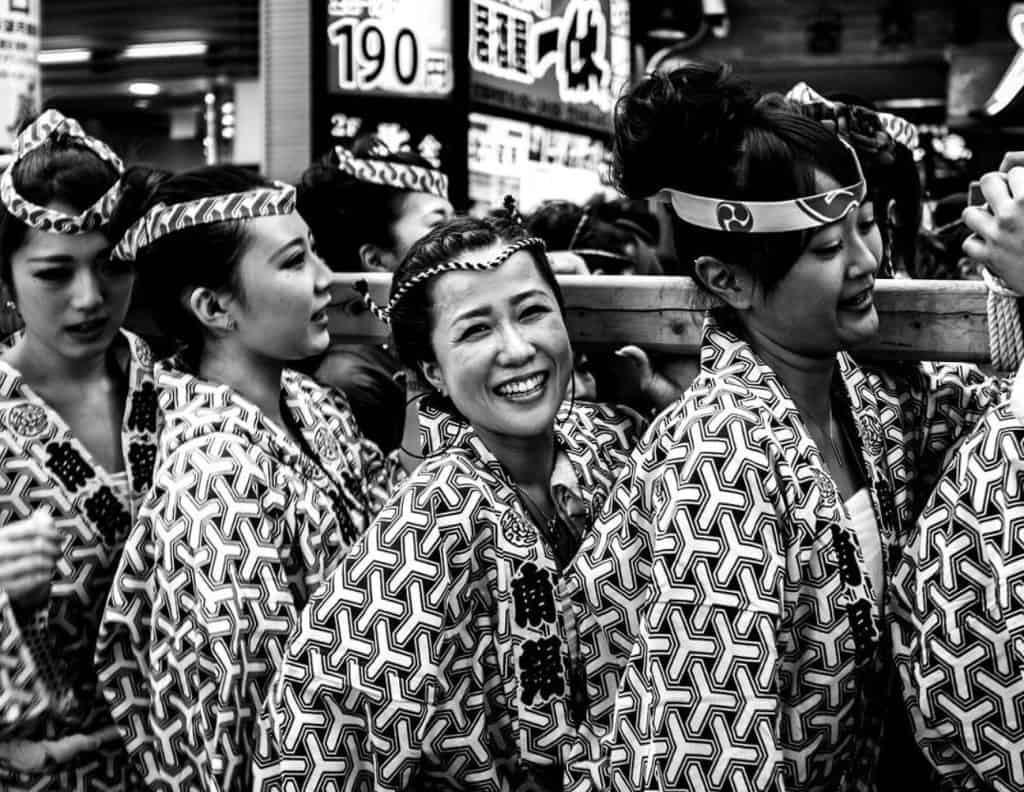
A big pull for a lot of tourists that come to Japan is how friendly everyone is, how safe it is, and how easy it is to get around. For the majority of those that have been here, Japan is just undeniably special.
I feel a little like I’m living in a bubble over here, and I doubt traveling will ever get any easier than it is in Japan.
I’m not saying that other places in the world arent tourist friendly, but I do know for sure from the copious amounts of research I’ve done that this is a big reason why a lot of people decide to visit Japan.
It is hard to say whether this has a direct effect on crowds, but perhaps more people will visit somewhere if they realize they can travel around Japan without a plan as opposed to with a tour guide.
I’ve spoken to a lot of people who have all said that they’d love to travel around Japan by themselves but that the culture is so foreign to them that they wouldn’t feel comfortable without a guide.
Despite the fact you may feel apprehensive traveling in Japan without speaking Japanese, it’s such a friendly place (at least while you’re on holiday) that there really isn’t all that much need to hire a tour guide if you don’t want to.
9 ways to avoid the crowds in Japan
So now we know why Japan gets so busy sometimes, but how can you avoid those crowds? Admittedly it’s sometimes just not possible, however, I have found that the following tips give me a fighting chance of seeing Japan without the crowds!
1. Visit during off-peak seasons
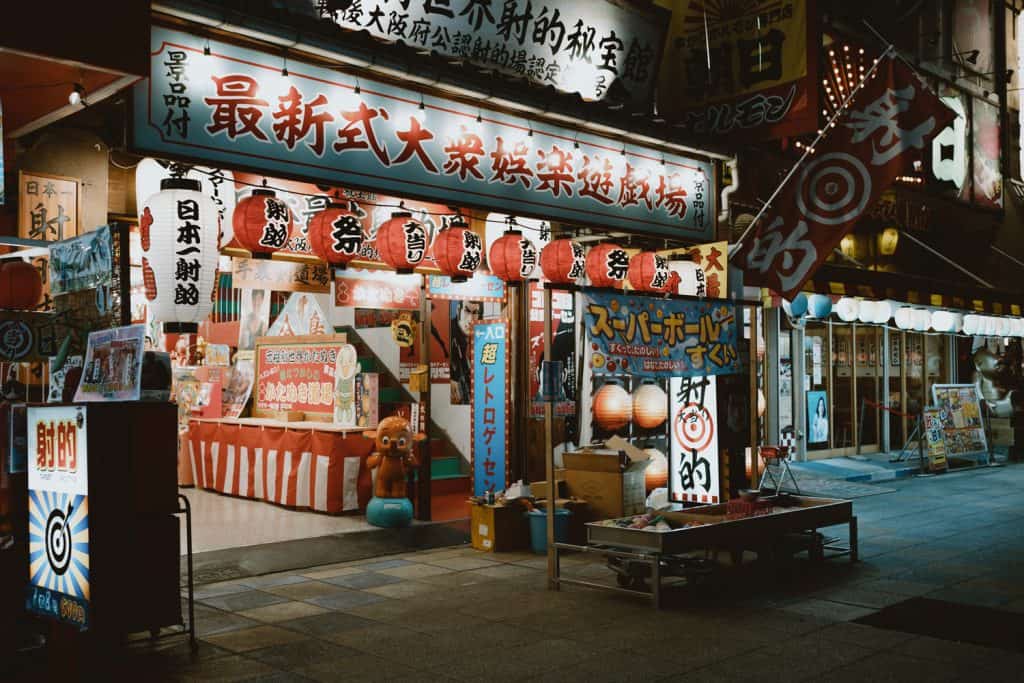
I think the biggest piece of advice I can give you in terms of trying to avoid crowds in Japan is to visit during off-peak seasons. Failing that, just don’t visit during Golden Week or over New Year’s.
If you can manage to get this right, everything else is a bit easier, and adding some of the other tips is basically just a bonus. Of course, I know most people want to come to Japan to see the Sakura in the spring or only have a certain time of year they can travel, so I understand that’s not always a possibility.
Top Tip: Whether you’re visiting during peak season or off-season, make sure you get up to 90% off your flights with Going. Yup, it’s just as ridiculous as it sounds!
2. Chose the right day & time

Once you’re in Japan, I’d suggest being as flexible as you can be with the day and time you chose to do a certain activity. I like to type the activity or location into Google, Osaka castle for instance (though don’t go inside it!), scroll all the way down, and on the right-hand side (if you’re on desktop) you’ll find Google’s ‘Popular Times’ widget.
Spend a couple of minutes on this and you’ll be able to see the least crowded days, times, and how it is right now. Couple this with a little more research on Google (I like Reddit or blogs for personal experiences) and you’ll be able to gauge when you should and shouldn’t go.
It’s a great way to plan when to do what, and sometimes I’ll add everything to my itinerary based on this tool so I know for sure I’m going on the right day. Of course, it always helps to have a rainy-day plan too!
3. Stay outside the city center
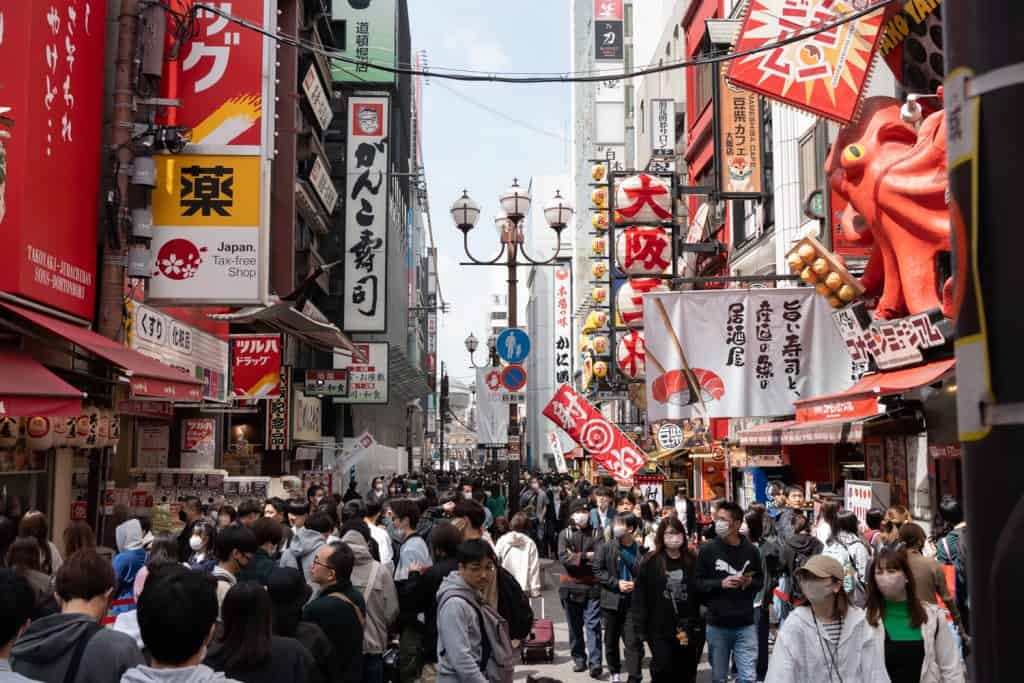
Sometimes it’s nice to stay right in the center of things. When we stopped at Sapporo for a couple of nights I knew I wanted to be in the city center so I could view the ice sculptures without walking miles and freezing in the process.
While the idea of booking a hotel close to the action turned out great, we got stuck in several blizzards and I still froze…
However, in other cases, I quite liked the idea of being slightly removed from all the hustle and bustle, and crowds that Japan had to offer. That was the case when we took a trip to Hiroshima and ended up staying in a traditional-style house.
Instead of staying in a hotel in the center of Hiroshima, we decided to get an Airbnb in Fuchu. It’s just 15 minutes away by bus, but the experience made all the difference.
The area was practically empty, there were no tourists in sight, and this was during spring (a very popular time!).
A bonus of doing things this way is that you’ll normally get accommodation that’s cheaper and maybe more unique. In our case, the host wanted to have a cup of tea with us before we left which was beyond cute!
Here’s a youtube video that, very briefly, shows our Hiroshima Airbnb as well as our time there!
4. Explore lesser-known destinations
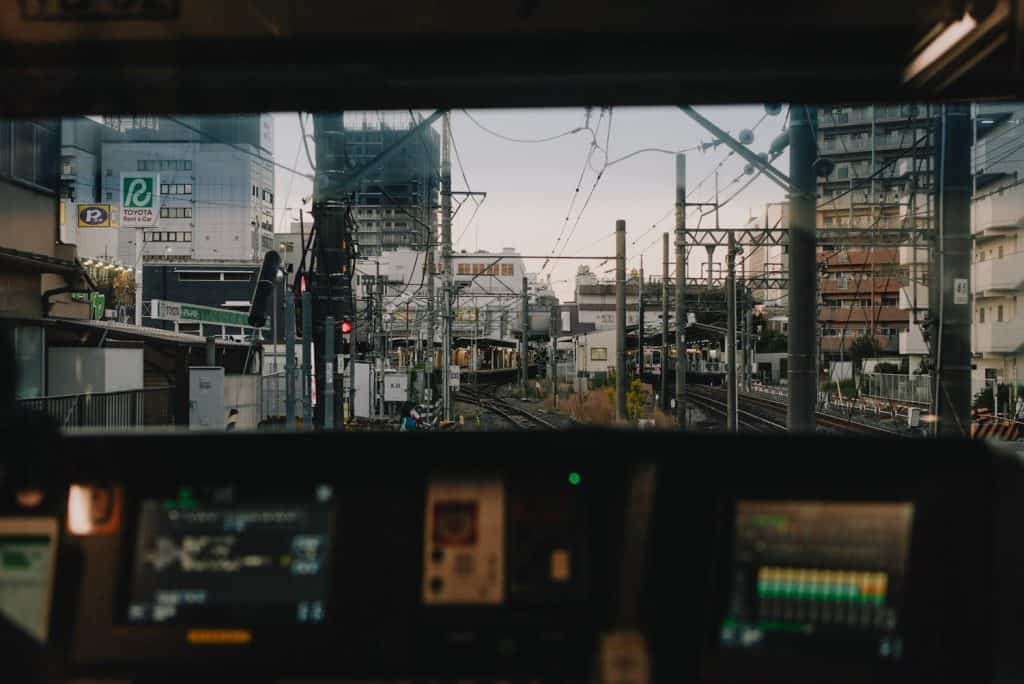
This is either going to be something you can do or something you can’t do depending on how rigid your itinerary is. However even if you’re traveling to Japan for the first time and have your heart set on some of the more well-known areas, I’d still recommend finding a few places that don’t crop up on the usual ‘Top 10’ lists, or trip advisor ‘articles’.
Unsure where to go? Take this quiz I made especially for you to decide on your next travel destination in Japan!
Other than searching on our explore page and that quiz, I’d recommend going down the Google rabbit hole to find something off the beaten track, searching for cities or destinations in between the two places you’re traveling from and to, and if all else fails, send me a message and I’ll help out!
For instance, if you want to go skiing in Japan but Niseko seems too popular and crowded for you, perhaps you could go skiing on Mount Fuji instead. Yup, that’s an actual thing you can do!
By the way, you should absolutely go skiing in Niseko because it’s by far the best experience I’ve ever had on a mountain!
5. Get up early or go out late
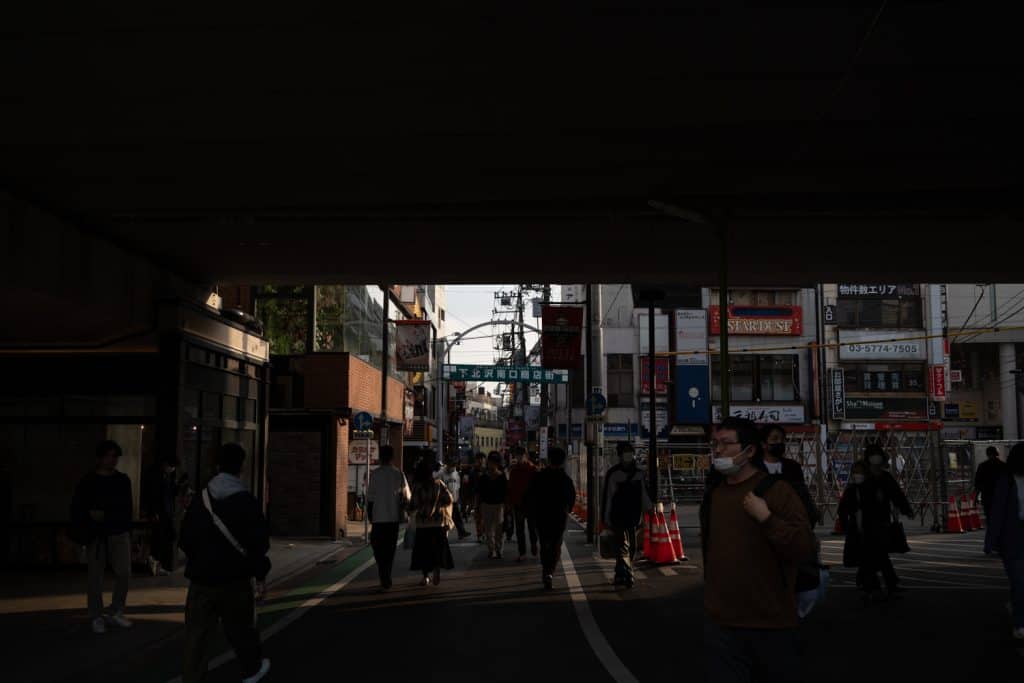
Easily one of the best solutions on this list.
Getting up early or going out later are always going to be great ways to beat the crowds in Japan. For both Miyajima, Nikko, and Nara, I’ve got up well before the majority of people and managed to have most of the place to myself.
Admittedly I ended up getting up at 4 in the morning for Nara, but sunrise with the deer was incredible. And it was made even better when I saw thousands of people around 12 o’clock. It felt good I won’t lie!
6. Purchase advance passes and tickets

While this suggestion doesn’t technically beat the crowds, it gives you a fighting chance to have your experience despite their presence. By booking slots, tickets, or passes a long time in advance you’ll be able to spend less time in a queue and more time feeling happy in the knowledge that you won’t have to change your plans if you can’t get in.
And this isn’t just the case for attractions, you may want to consider booking your Shinkansen tickets ahead of time as well if you’re traveling at an especially popular time of year as well. Or if you’re looking to board one of Japan’s unique trains like the Izumo Express (Japan’s last sleeper train), you’ll only be able to book tickets a month in advance and you need to be in Japan.
It’s worth noting that some of the attractions and trains in Japan will require certain things to book tickets. Being in Japan is one of the requirements for certain activities, and I’ve even seen a moss garden in Arashiyama where the only way to get inside was to send them a written letter about the days you’d like to visit.
Basically, check beforehand is all I’m saying.
I should mention, pre-booking restaurants is another thing people overthink, and when the country is particularly crowded it can definitely be an issue to get into specific restaurants. When we spent our first two days in Hiroshima, we spent walking much longer than we needed to in the evenings because we forgot to reserve anywhere!
7. Ride the less popular transportation options

I’ve talked a little bit about this in my recent Things to know about Shinkansen article, but basically, you shouldn’t always take the quickest form of transport to your next destination, especially if you’re traveling during peak periods.
Again, this will only work for locations where there’s more than one way to get to them and it might not always be the cheapest option. The idea here is that the majority of people will almost always take the quickest and most straightforward route to a destination, and you’ll avoid that crowd by taking a less-trodden path.
Instead of the Shinkansen or Plane, you might choose to take a Japanese sleeper bus, a sleeper train, or simply some of the local rapid or commuter trains.
I’m particularly fond of the last option if you’ve got a bit of time to kill. It’s not ideal if you’ve got a load of suitcases (if you do, use Yamato transport!), but with backpacks, sometimes the local trains can be a load of fun.
When we left Hiroshima to travel up to Okayama, the quickest route we could have taken was one local train and another Shinkansen. At this point, we were running a little low on cash, and the extra ¥3000 or so yen it would cost to take that route was better spent somewhere else.
So instead we decided to take 4 local trains that took about 3 hours longer. Yup, as I said it’s normally only a good idea if you’ve got enough time!
On another occasion, we decided that riding a train around the very top of Japan was a much more fun experience than cramming ourselves on a coach that went straight from Sapporo to Niseko. It took the whole day, but it was far less busy than a coach would have been.
8. Walk a little more

I write this on practically every travel article on this blog, walking just that little bit further than everyone else can mean the difference between a busy area, and one you’ve got practically to yourselves. That’s even the case during an incredibly busy season like spring or autumn.
It’s things like this that make Nara worth visiting even at the busiest times of the year on a Saturday. I should know, I’ve done exactly that!
9. Just go with it

Sometimes, Japan is just going to be busy and the trains are going to be crowded. Is it the end of the world?
Not really.
We all know how annoying these big crowds can be, but most of the time, there’s a reason so many people are there. Yes, there are tourist traps you should watch out for (article coming soon!), but if you can’t control the number of people that are there then please don’t let it ruin your holiday.
Whatever the situation is when you get here, get stuck in and start absorbing that culture!
Crowds in Tokyo getting the better of you? Here are a few places to relax in the country’s capital!



